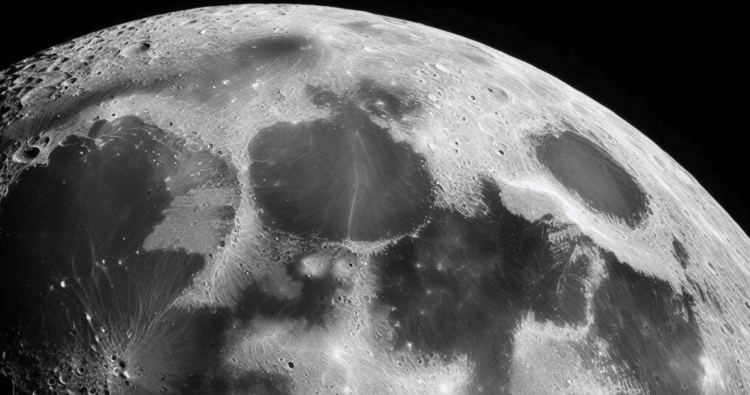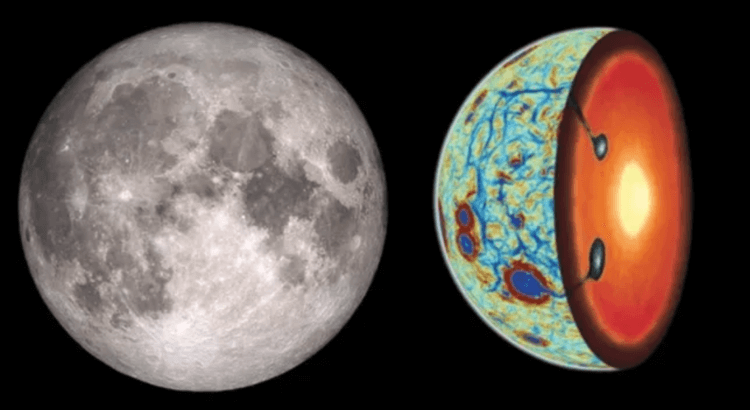The Earth's natural satellite arose approximately 4.5 billion years ago as a result of a cosmic catastrophe. Recall that a planet comparable in size to Mars crashed into the Earth, resulting in molten material being thrown into space. Quite quickly it grouped, resulting in the formation of the Moon. Gradually it cooled, became solid, and eventually became as we know it. However, according to a recent study, the evolution of the satellite was actually more complex, for example, employees at the University of Arizona described it as an “adventure novel.”

At some point in time, the outer layer of the Moon sank into its depths, and the inner layer rose outward
How the Moon was formed
There are many different versions of how the satellite could have formed from the moment of a cosmic catastrophe to the emergence of the Earth-Moon system. Not long ago we told you that it only took a few hours to form the Moon. However, after this, a number of other events occurred that are still completely unknown. Nevertheless, over the past decades, it has been possible to obtain some information about the history of the satellite.
For example, quite recently, scientists learned that the Moon turned out to be older than previously thought. Now, by studying rock samples collected during the Apollo mission, researchers have discovered that at some point in time the Moon “turned inside out.”

The Moon was formed within a few hours
It must be said that scientists had guessed about this for a long time, but there was little physical evidence that could confirm this event and shed light on it.
Why the Moon turned inside out
Studies of lunar basaltic lava rocks have shown that they contain large amounts of titanium. In addition, satellite observations have shown that titanium-rich volcanic rocks are mainly concentrated on the near side of the Moon. As a result, scientists have a question: how did these rocks get to the near side of the Moon, and why are they not found in other parts of the satellite?
University of Arizona researchers suggest that the answer lies in the history of the Moon's formation. Initially, it was completely covered by a hot ocean of magma. Over time, the surface froze, that is, a solid crust and mantle formed. This created dense materials such as ilmenite, a mineral rich in iron and titanium. But at the same time, the inner part of the satellite remained liquid and lighter. Because the heavy minerals were denser than the mantle below, they created gravitational instability and gradually sank deeper into the moon's interior. In this case, the internal, liquid part of the satellite ended up on the surface.

The hard, dense material on the Moon's surface sank beneath the lighter mantle. Photo source: www.livescience.com
If all these processes really occurred, the question arises: did the dense material sink immediately, that is, in one “drop,” or did it sink gradually in separate parts? And if the dense layers sank into the bowels of the Moon, why did some of them rise up and transport titanium to the near side of the Moon?
Where did titanium come from on the surface of the Moon
Peking University staff have developed models that answer the questions posed. They suggest that the Moon suffered a powerful impact, resulting in a displacement of a dense layer rich in titanium. When this layer ended up on the near side of the satellite, it formed sheet-like deposits and cascaded down to depth. As a result, titanium-rich slabs formed under the crust.
To confirm this theory, the team examined data on lunar gravitational anomalies detected by NASA using its twin GRAIL satellites. In fact, information about the gravitational field of the Moon allowed scientists to “look” under the surface of the satellite. As it turned out, data from the GRAIL satellites fully confirm the announced model.

Data obtained by the twin GRAIL spacecraft confirmed scientists' assumptions about the formation of the Moon. Photo source: www.livescience.com
Scientists were also able to find out when the Moon turned inside out. The study, published in the journal Nature Geoscience, found that the ilmenite-rich layer sank before the emergence of ancient lunar impact basins. This means that the subsidence of dense layers occurred no later than 4.22 billion years ago. It is quite possible that it was this event that triggered the volcanism, which occurred for a long time.
Don't forget to subscribe to our Zen and Telegram channels so as not to miss the most interesting and incredible scientific discoveries!
Thus, the early history of the Moon is hidden beneath its surface. It is quite possible that in the future it will be possible to fully disclose it. But this will happen after people can not only return to the surface of the satellite, but also stay on it.